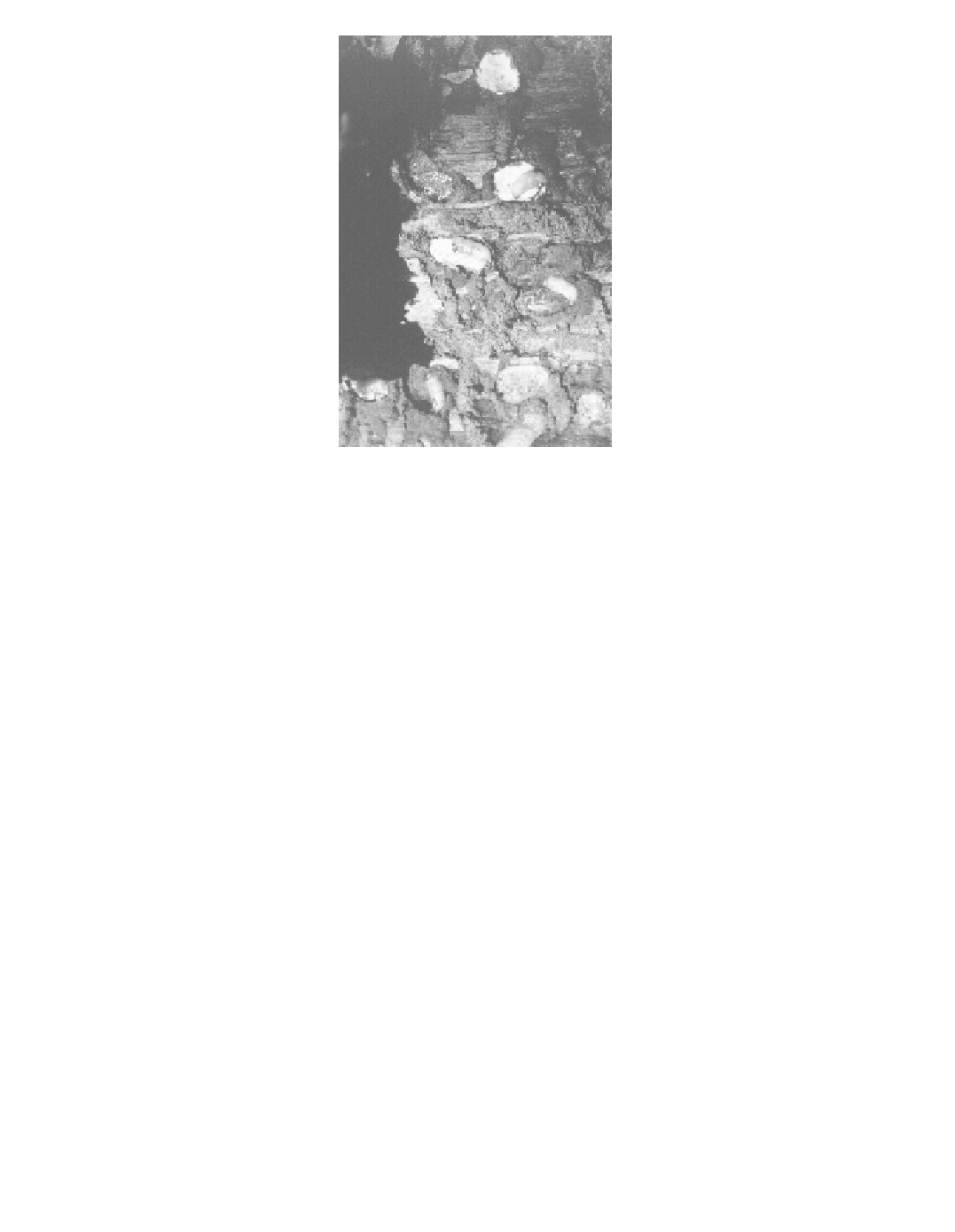Biology Reference
In-Depth Information
FIGURE 7.1
(Color Ýgure follows p. 206.)
Pupae of
Dendroctonus ponderosae
in fungal-lined pupal
chambers.
(Eichoff) (Moser and Roton, 1971). Tsuneda et al.
(1992) isolated an arthroconidial basidiomycete from pupal chambers of
isolated from pupal chambers of
I. avulsus
Dendroctonus ponderosae
Hopkins.
Entomocorticium
species appear to be the most common and widespread basidomycete
associates of bark beetles.
I.
avulsus
, a nonmycangial beetle, is associated with an
Entomocorticium
species that acts as a larval nutritional symbiont (B.T. Sullivan, personal communication cited in
Klepzig et al., 2001).
Entomocorticium dendroctoni
Whitney, Bandoni, and Oberwinkler can some-
times be found lining the pupal chambers of
, either alone or in combination with
ascomycete mycangial fungi, and some evidence suggests that this fungus may contribute nutri-
tionally to the beetle (Whitney et al., 1987). A closely related
D. ponderosae
Entomocorticium
can also sometimes
be found in pupal chambers of
sp. A (previously called
SJB 122) was the Ýrst basidiomycete to be isolated from a bark-beetle mycangium and is commonly
found in the mycangia of
D. jeffreyi
(Hsiau, 1996).
Entomocorticium
D. frontalis
(Barras and Perry, 1972; Hsiau, 1996).
Dendroctonus
brevicomis
was subsequently found to carry a related
Entomocorticium
in its mycangium (Whitney
and Cobb, 1972; Paine and Birch, 1983; Hsiau, 1996).
Y
EASTS
Although the occurrence of ascomycete yeasts with bark beetles has been common knowledge
for many years (Whitney, 1982), relatively little is known of their taxonomy or effects on the
beetle host. Yeasts are associated with all developmental stages of the beetle. They are common
on the outer surface of eggs, larvae, pupae, and adults, in the intestinal tracts of larvae and adults
(Grosmann, 1930; Leach et al., 1934; Shifrine and Phaff, 1956; Lu et al., 1957), and occasionally
in the alimentary canal of pupae (Shifrine and Phaff, 1956). They are commonly carried in
mycangia and in pits of the exoskeleton of adult beetles (Whitney and Farris, 1970; Whitney
and Cobb, 1972; Furniss et al., 1990, 1995; Lewinsohn et al., 1994), and they densely colonize
walls of beetle galleries and pupal chambers (Bridges et al., 1984) as well as xylem tissues of
the host tree (Caird, 1935). Individual adult beetles often carry two or more yeast species, and,
unlike the Ýlamentous fungi, which tend to have species-speciÝc associations with beetles, several
yeast species are commonly carried by several species of beetles. Two species,
Pichia capsulata
(Wickerham) Kurtzmann and
P. pini
(Holst) Phaff, are associated with most bark beetles thus



















